For most people who take a DNA test and find out they have Native American ancestry, the next question tends to be: how do I find my Native American tribal affiliation? I’ve written this guide to help you navigate through the tremendous number of resources available and hopefully help you find the answer to that question.
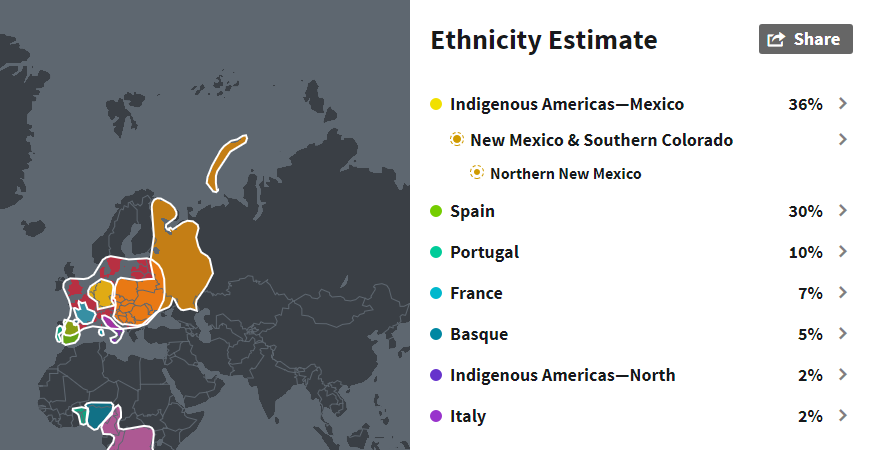
Considerations
It is crucial for anyone navigating this territory to understand that Native American tribal affiliation is a tremendously sensitive issue for many reasons. First, Natives across North and South America tend to be community-based. This means that membership in that particular tribe requires one to actually live in that community. Often times, people trying to find their tribal affiliations do not fall into this category. As a result, you must tread lightly here. Here is an example: on my mother’s father’s side, several of my great aunts insist that my mother’s father was a full-blooded Yaqui. Based on my research thus far on the topic, I haven’t found anything definitive to prove this but by triangulating methods, I’ve determined it is very likely. It would be a tremendous error if I were to go around saying I am Yaqui however because I know nothing about that community. Claiming Yaqui without membership would probably anger a lot of people and would eliminate any opportunity I would have to learn more from people who have membership as Yaqui people. The Yaqui people on both sides of the border have specific criteria one must meet to be considered a member.
Second, Natives have different criteria for membership. Imagine you are very excited to find an ancestor who is Apache and let’s say that person is your 2nd great grandparent. Most likely this is not enough documentation to join most Apache tribes however the Fort Sill Apache do enroll people who can prove at least one 3rd great grandparent is Apache from the region. Most Northern Native American tribes require at least one grandparents, one great grandparent, or one great great grandparent to be considered for enrollment (1/4, 1/8, 1/16). Other tribes use “tribal rolls” for membership. For membership in these tribes, one only needs to show that a Native person who appears on tribal rolls is also found in that person’s family tree. As you can imagine, it is very possible that many members of northern Native American tribes especially those requiring 1/16th blood quantum or tribal roll membership have very little to no Native American DNA at all (read more about this in DNA inheritance 101 below). This is a big reason why one must not solely rely on DNA. For Native tribes south of the Mexican border, it is a very different situation. Natives north of the border endured genocide whereas native south of the border did not. As a result, it is common for people who live in a Native community south of the Mexican border or whose recent ancestors lived in Native communities south of the Mexican border to have close to 100% Native American DNA. In Mexico and other nearby countries, Native membership is determined by the community one belongs to rather than blood or lineal descent. This practice existed in Pre-Columbian times where the name of the tribe was usually linked to the altepetl (or city-state) one lived in. If I were to go to a Yaqui community in Mexico and tell them I am Yaqui, they would likely be very confused.
Third, two dynamics exist depending on where you reside. North of the Mexican border, Native Americans are romanticized and it is not hard to find White Americans who very proudly claim to have Cherokee ancestry. Although they are romanticized, they are simultaneously ignored as if they exist only in the past as the “noble savage”. South of the Mexican border, Native Americans are very poorly treated. It is prevalent in Mexican families to consider light skin beautiful and dark skin ugly. This is due to the caste system that has been in place since the Spanish conquest whereas people with more European blood are valued more than people with less European blood. As a result, few people embrace their Indigenous ancestry because it affects their upward mobility in a very real way. This can make it very difficult to find tribal affiliations south of the border but it is not impossible.
Fourth, sometimes tribal affiliations are found however there is no longer a distinct community which maintains that identity. This happens whenever a tribe endured genocide, warfare, or high mobility and assimilation. Many people with ancestry in Mexico for example can trace their family tree to the Mexica (commonly known as the Aztecs, read why in the DNA inheritance 101 section below), the most powerful tribe in Mexico at the time of the arrival of the Spaniards. However, since there is no longer a Mexica community in Tenochtitlan, one can’t become a member of that community. For example, I have found Mexica, Tepaneca, and Tlaxcalteca ancestors in my family tree however the native communities of Tenochtitlan, Azcapotzalco, and Tlaxcala no longer exist because they were absorbed into modern Mexico cities. Fortunately, a modern identity exists for Nahuatl speakers (the Mexica, Tepaneca, and Tlaxcalteca were all Nahuatl speakers): Nahua. I can therefore just say I have Nahua ancestry. Again, I need to be careful with my wording because if I say I am a Nahua, I may be challenged since I do not live in a Nahua community. Tread lightly whenever possible and always respect the boundaries set by Native communities.
Lastly, if you are able to afford a DNA test in the first place, you likely live in a city and your ancestors have likely lived in cities for multiple generations. Often times advice is given to find the tribes living near the city because you are likely related to them. There is research that supports this however this is not always the case. My brother-in-law’s family is from Chihuahua however when he began building his family tree, he found that his mother’s family actually migrated from Mexico City to New Mexico in the 1500s and then moved to Chihuahua after the Pueblo Revolt. As you can imagine, he has found a lot of Indigenous ancestry from Mexico City and also New Mexico. As a result, if your family has lived in cities for many generations you will likely have many different tribal affiliations.
DNA Inheritance 101
Native American DNA inheritance can be summarized with this seemingly paradoxical statement: Kennewick Man (an ancient Native American who died about 8,000 years ago and whose remains were studied extensively) is the universal ancestor of every single person who has Native American DNA yet most Native people today do not possess any DNA from Kennewick Man. Read that again if you need to please. “Every time an individual has a child, exactly half her DNA is copied into that child. Every time she has a grandchild, a quarter of her DNA on average goes into that grandchild. On average you can expect 1/8th of your DNA to end up in each great-grandchild, 1/16th in each great-grandchild, but it could be more or less. And so on until the likelihood of a literally zero contribution to a given descendant becomes significant (Ancestors Tale, page 38).” Therefore, those people who do possess DNA from Kennewick man, likely only have a tiny fraction of a single DNA letter from him because he lived so long ago.
As you begin building your family tree you will quickly find that people who live in the same regions as you are likely your cousins. I for example found that my brother-in-law is my 5th cousin and we were able to find the exact ancestors we have in common. This is because both of our families are from Chihuahua and New Mexico.. If you work long enough on your family tree you will inevitably find rampant incest. In most cases, its not close incest but 2nd-4th cousin incest and probably your ancestors had no idea they were actually related just as I had no idea I was related to my brother-in-law! This is actually good (for us, not so much for them) for two reasons: 1) it decreases the number of ancestors you need to sift through, and 2) it increases the likelihood that DNA from any particular ancestor is preserved. For example lets say that Motecuhzoma Xocoyotzin (commonly referred to in genealogy as “Moctezuma,” the last tlatoani or emperor of Mexico-Tenochtitlan) happens to be your 13th great grandparent on your dad’s grandmother’s line. The DNA you inherited from him will be a very small amount because he lived 500 years ago. However, if you find Motecuhzoma Xocoyotzin in multiple lines of your family tree, the DNA inherited from him will be a much higher amount. DNA analyses in modern biology have revealed that it takes a surprisingly short amount of time for one person such as Kennewick man to become the universal ancestor to every person in a region such as North and South America: about 2,000-3,000 years! This means that if you follow the family trees of all Native Americans 2,000-3,000 years in the past, everyone will have the same ancestors. This is what makes Native Americans one big family in the first place.
Knowing that, please don’t go around proclaiming Native Americans are all the same because you will be sure to anger many Natives who greatly value their tribal sovereignty over unity with other Native groups. It can be maddening at times, but that’s just the way it is. Again, tread lightly. In any given location of smaller size such as Mexico for example, it takes a remarkably shorter time for one person to be the universal ancestor of everyone in that region and in approximately 350 years, we can expect that Motecuhzoma Xocoyotzin will be the great grandfather of ALL Mexicans. This of course means that there should be a very large number of Mexicans today who can count him as their great grandfather (likely upwards of 75%)! Don’t be surprised if you find him in your tree as his lineage is very thoroughly researched. This is an important trend to note: it’s much easier to find parts of your tree connected to prominent historical figures than it is to find parts of your tree connected to less prominent historical figures (Source).
Genealogical Societies
My journey searching for my tribal affiliations began a few years ago. I was very frustrated because my ancestry DNA test came back as 38% Native American and I also possess a Native American mtdna haplogroup (C1b) however I had no idea which tribes I descended from (for more on mtdna haplogroups, click here) . On a whim, I sent all my known grandparents names on my father’s side to the New Mexico Genealogical Society because the only thing my father knew was that his family came from New Mexico. I was astonished when a worker at the New Mexico Genealogical Society e-mailed me a family tree of my father’s grandmother’s side going all the way back to the 1600s! Contacting a local genealogical society should absolutely be your first step as they have researched multiple various family trees and have a wealth of documentation to back up their work.
Social Media Groups
Many genealogical societies also maintain social media groups. Joining these groups for your specific region is a great step that will help you build your family tree and find tribal affiliations. Again, this is because most people from a particular region are probably cousins due to how genetics are dispersed. Here is an interaction I had with a member of the Chihuahua State Genealogy Group:
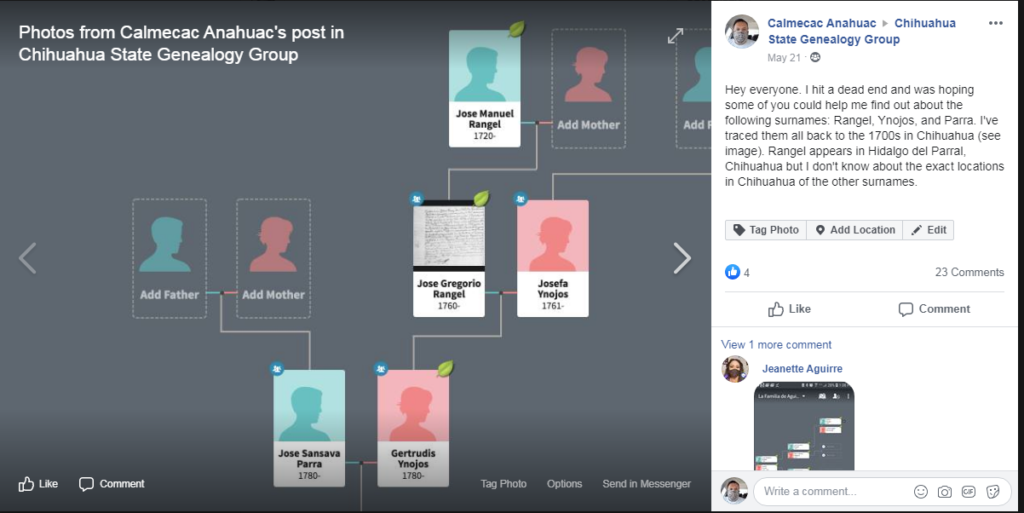
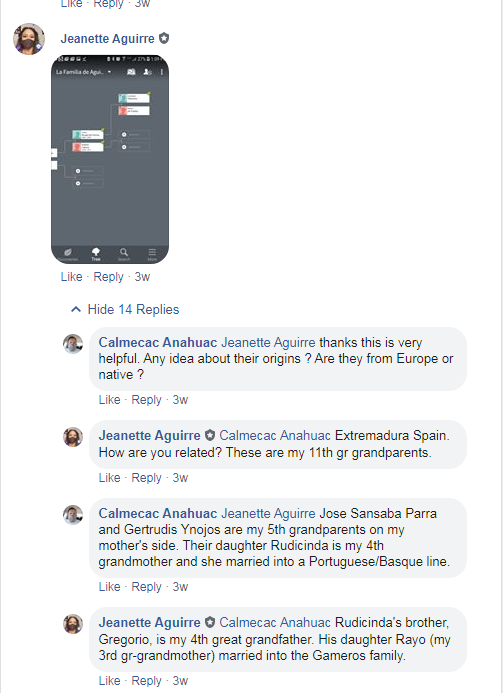
As a result of this interaction, I found a cousin, and also expanded my family tree on my mother’s side about 200 years in the past. My mother’s family always said that our grandparents were Spanish, Portuguese, and Basque and I was able to confirm that using this strategy. Although it may be counter-intuitive, finding your European ancestors is absolutely crucial in the search for your tribal affiliations. This is because once you’ve identified your European ancestors, you can easily narrow down the lines in your family tree where your Native ancestry comes from. On my mother’s side for example, it turns out that her mother’s parents are European and her father’s mother is also European. Considering I inherited a Native American mtdna haplogroup from my mother, I can then firmly identify her father’s father as the source of my Native DNA on her side. As I stated earlier, this aligns perfectly with my great aunts’ claim that her grandfather was a full-blooded Yaqui. This would make me 25% Native on my mother’s side which means my father’s side has a much higher percentage of Native American DNA. My next step is to test my father’s DNA to confirm that. This corresponds to the family tree I have built on my father’s side that contains great grandparents from several different tribes. Members of genealogical groups tend to have access to additional resources such as books and articles that can help you find your ancestors as well.
Ancestry
I am often asked which DNA company is the best. For those searching for tribal affiliations, Ancestry is the best by a huge margin. What makes Ancestry so great is that the company has existed for a very long time and before DNA testing became popular, Ancestry specialized in helping people build their family trees by allowing them to access their giant database of ancestral documents. Many Ancestry users have thousands of people on their family trees due to the plethora of resources available to them through Ancestry. When you take an Ancestry DNA test, Ancestry automatically compares your DNA to its members. It then gives you a list of your cousins in an area of the website called “DNA Matches”.
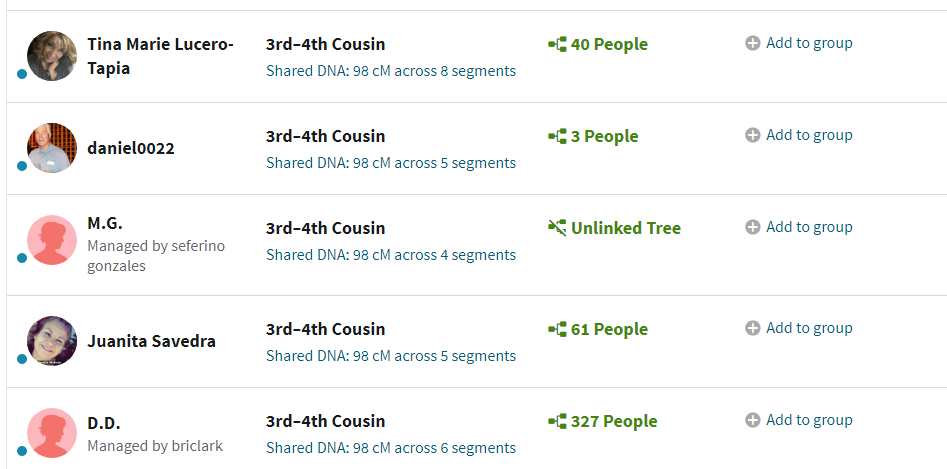
You will find you literally have thousands of cousins, all related to you in very different ways. Since most people on Ancestry also have linked family trees, you can look at their trees and find your common grandparents. This makes growing your family tree so much easier. For example, you might find your common 4th grandparent but the other person’s tree has their parents and grandparents whereas yours does not. You can add those names to your own tree since you know you descend from the same line. Ancestry also allows you to contact other members in case you have clarifying questions. Most people are happy to meet cousins and learn how you are related to each other. Lastly, Ancestry has created an algorithm that analyzes the DNA and family trees of you and all of your cousins and tells you the exact names of the ancestors you both have in common. This is a huge time saver! Other companies also allow users to include family trees however none are nearly as robust as Ancestry.
Triangulation: Other Tools
In social science, triangulation refers to the combination of different research methods in the study of the same phenomenon. Triangulation is crucial in genealogy work because unfortunately you will encounter false positives. I once found a link to Motecuhzoma Xocoyotzin in my family tree only to find that his supposed daughter “Ines” did not even exist! Ancestry sometimes gives you ancestry hints whenever it thinks it finds one of your ancestors. These ancestry hints appear as green tree leaves. Upon clicking on of the ancestry hints, ancestry added Luiz Nanacipactzin to my tree as my great grandfather. Luiz Nanacipactzin was the last tlatoani (many historians consider leaders after Cuauhtemoc to be “puppets” of the spanish crown) of Tenochtitlan. After triangulating with the sources below, I determined that he is indeed my great grandfather which added a Mexica line to my tree.
Gedmatch – Once you receive your DNA results, your next step should be to upload the results to GEDmatch. Most people who are serious about genealogy have a GEDmatch account and the website contains many powerful tools. If for example, you find you share great grandparents with someone else based on your family tree you can do a one-to-one comparison to compare your genes to confirm that you both also share the same DNA from those ancestors. Here is a tool that tells you how closely related your parents are:
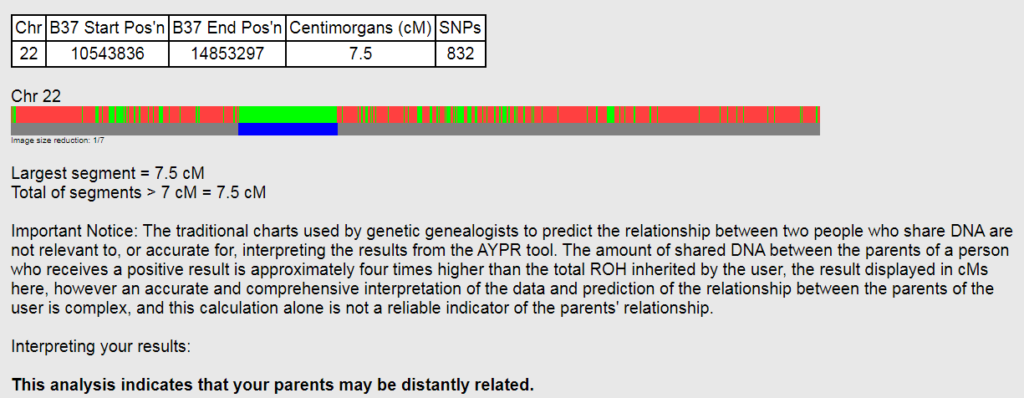
Geni – Geni is a website that like Ancestry, focuses on family trees. The layout makes it very easy for users to add information and documents and I have been able to find several tribal affiliations using this website. Because it is user-driven, it is very important to triangulate any information you may find here with other sources to ensure the information is accurate. Here is some really cool information I found about my 10th great grandmother Maria Pascuala Bernal:
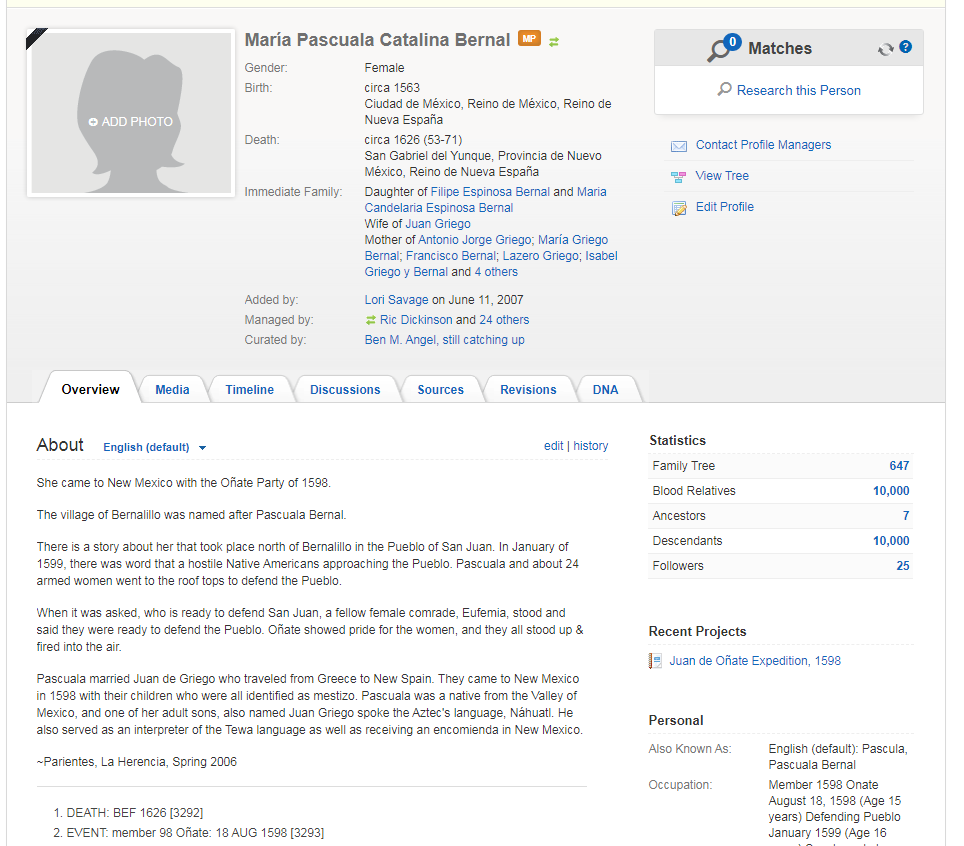
Family Search – This website is operated by The Church of Jesus Christ of Latter-day Saints and is considered to be one of the best genealogical resources for people with ancestry in Mexico.
My Heritage – This website is very similar to Ancestry and has an impressive library of documents available for research.
Feel free to reach out to me at mexicauprising@yahoo.com if you have any questions or want to share success stories
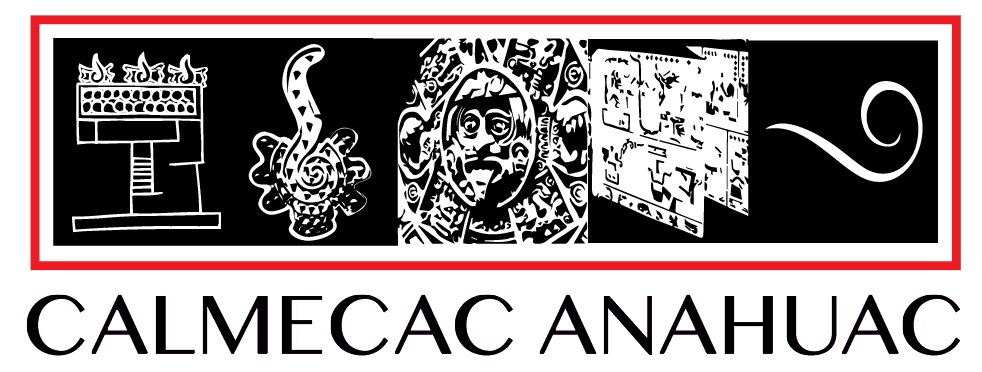

Permalink
My great grandmother was yaqui Indian (lusia Cejas born around Dec 1887. And was kidnapped by Modesto Duval Ramirez and taken to Jamey Mexico. Were they had 5 kids my grandmother being the youngest. My grandfather was born to Genevieve Castaneda father unknown also Yaqui. How do find my tribe.
Permalink
My grandfather was a 100% yaqui from sonora.
He fight on the wars of obregon when he enlisted to his troops a section of yaquis. And he became a brigadier general .. finally he came to coahuila state. And may father was born in guanajuato during my grandfather astive military on those areas. And i born here on coahuila.. they both past away now.
But my family always know that we came from the yaqui as my dad used to told me.
How can i trace the family of my grandfather back on territory yaqui?.
I dont know nobody on the side of my grandfahter family. Cause he didnt live that long to take my dad over there.
My last named is. JAIME now. Dad told me once that maybe there is a letter miss or something.
As lutle a search now i become of knowledge that the last past lider yaqui as a voice man .. was silgerio JAIME as my last name is.
I read that he past away last year feom covid unfortunely .
I wish you could tell me on which or whit who i can comunnicate for information so i can know a part of family that we lost forever and never got back again.
My grandfathers name is
Juan jaime hrdz.
Hrdz campa his mother
I will apreaciated any information thanks.
On ancestey tree didnt find him at all.
My father was named alvaro as for alvaro obregon who my grandfather serve as his gral chief and personal man.
He was present in both hits on obregon.
He saved his life and in the second he couldnt.
Permalink
Hi my name is Joann Wilkins I want to know I am Pascua yaqui or TO. Both my parents of decease and the family told us we are native do not much. I will like to do a DNA test to find out where can I go to do this.. Please advise us